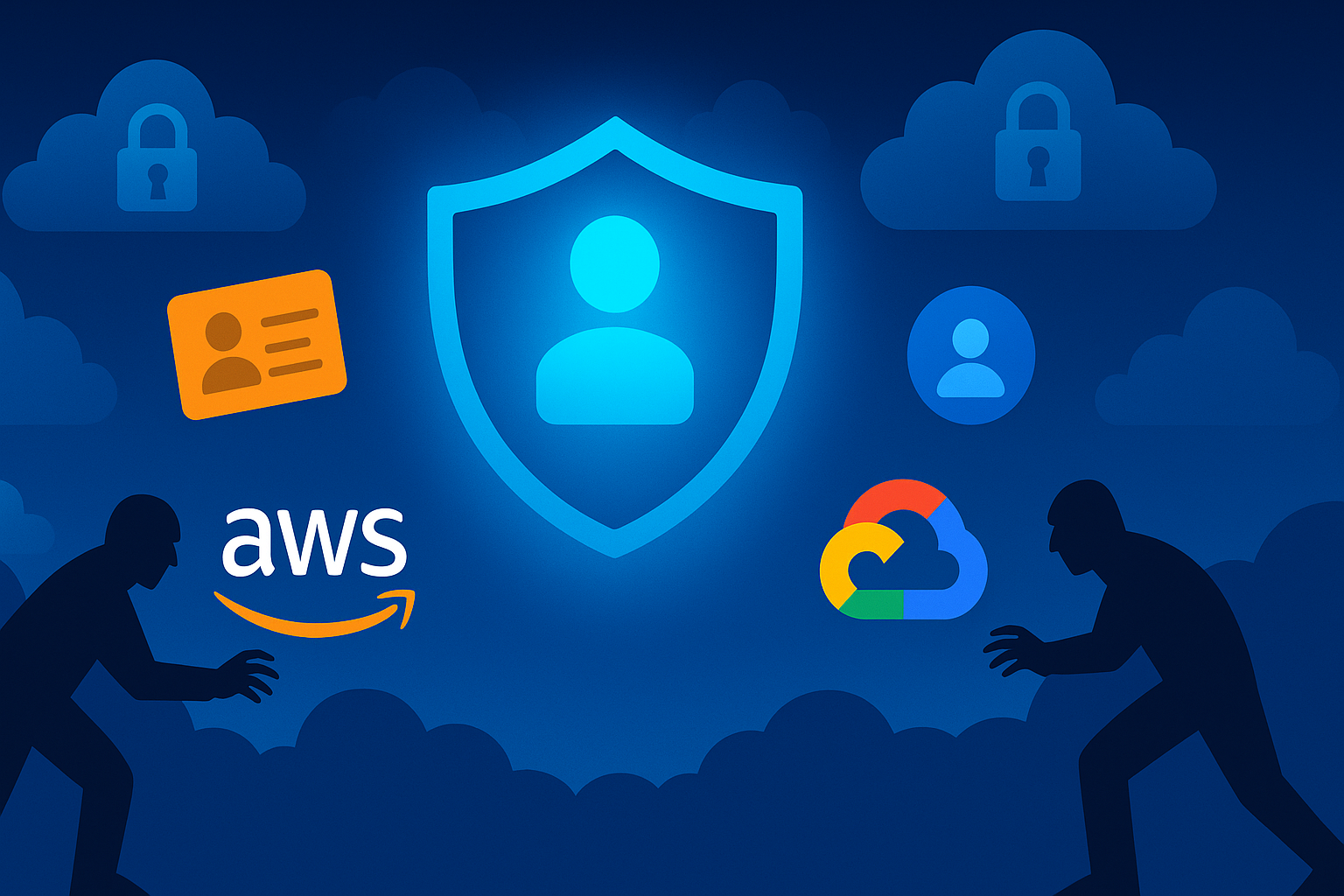
IAM 101: Why Identity in the Cloud Must Be Your #1 Security Priority for AWS, Azure, and Google
TL;DR
Identity is the real cloud perimeter. As businesses move to AWS, Azure, and Google Cloud, old security assumptions vanish—and identity becomes the #1 target for attackers. This post explains why managing cloud identities (not just passwords!) is the key to surviving in a world of SaaS, hybrid work, and zero trust.
Introduction
A decade ago, your company’s “security perimeter” was a locked office and a firewall. Fast forward to today: employees, partners, and vendors access resources from anywhere, often with their own devices. Data lives in dozens of clouds. The only true perimeter left? Identity.
If you’re using AWS, Azure, or Google Cloud—even for a single app—identity management isn’t just an IT task. It’s the difference between stopping a breach and reading about your company in the headlines.
Why Cloud Identity Is So Critical
- Cloud Breaches Start with Identity
- The vast majority of cloud breaches in the last five years began with compromised credentials, misconfigured identity permissions, or a lack of strong authentication.
- “Perimeter” is Obsolete
- Firewalls and network segmentation aren’t enough. Attackers go straight for your cloud console, admin accounts, and service principals.
- Everything Is Connected
- Your HR system connects to your cloud directory. Apps share data. Privileged accounts are everywhere. A single identity compromise can give attackers a “skeleton key.”
- Zero Trust = Identity-First
- Modern security frameworks like Zero Trust and NIST 800-207 all start with strong identity foundations.
Common Cloud Identity Risks
| Risk | Why It Matters | Real-World Example |
|---|---|---|
| Overprivileged Admin Accounts | Attackers gain full control if compromised | Stolen AWS root account |
| Lack of MFA | Password leaks = instant cloud access | No MFA on Azure admin |
| Misconfigured Roles and Policies | Users, apps, or VMs get excessive access to sensitive data | GCP service account leaks |
| Orphaned or Dormant Accounts | Former employees or unused accounts become easy entry points | AWS IAM user not removed |
| Shadow IT and Unmanaged SaaS | Third-party SaaS apps connect to core cloud environments | Unapproved OAuth apps |
IAM Best Practices for the Cloud
- Enforce Multi-Factor Authentication (MFA) Everywhere
- Especially for admin and high-privilege accounts.
- Follow Least Privilege
- Review and restrict permissions for users, service accounts, and applications.
- Automate Provisioning/Deprovisioning
- Integrate HR systems or identity platforms (like Okta/Azure AD) to automatically manage cloud accounts and access.
- Monitor and Audit
- Use built-in cloud audit logs. Set alerts for suspicious sign-ins, permission changes, or access from unusual locations.
- Regularly Review Roles and Access
- Quarterly access reviews for all cloud accounts and apps.
- Protect Non-Human Identities
- Rotate service account keys and secrets. Limit their privileges.
- Educate and Train Users
- Security awareness isn’t just for IT—everyone can be a target.
Cloud-Specific Tips
AWS
- Use IAM Roles, not long-lived IAM users or root accounts.
- Turn on AWS CloudTrail for logging and enable GuardDuty.
- Use AWS Control Tower for multi-account security baselines.
Azure
- Enforce Conditional Access Policies (device/location-based controls).
- Protect Global Admins with just-in-time access (PIM).
- Monitor risky sign-ins in Azure AD.
Google Cloud
- Use Identity-Aware Proxy and BeyondCorp.
- Limit use of legacy “service account keys.”
- Use Organization Policy Service to set global identity restrictions.
Pitfalls to Avoid
- MFA Fatigue: Don’t rely on SMS codes. Use app-based or hardware keys for admins.
- Ignoring Service Accounts: Bots and automated tools need the same protection as users.
- “Set and Forget” Policies: Cloud environments change constantly. What was secure last year may be a risk today.
- Manual Cleanup: Orphaned accounts pile up fast. Automate offboarding!
Why This Matters—Real-World Impact
Case Study: In 2023, a Fortune 500 company suffered a major data breach when a former contractor’s Azure AD account was never deactivated. The attacker used it to bypass all firewall rules, access sensitive databases, and exfiltrate customer data—costing millions in damages and compliance penalties.
Conclusion
Identity is the new firewall in the cloud. If you’re serious about securing AWS, Azure, or Google Cloud, start by mastering cloud IAM. Review your current identity posture, update policies, and make sure you’re not the next headline.
Further Reading
- NIST 800-207: Zero Trust Architecture
- AWS Identity Best Practices
- Microsoft Azure AD Security Documentation
- Google Cloud IAM Documentation